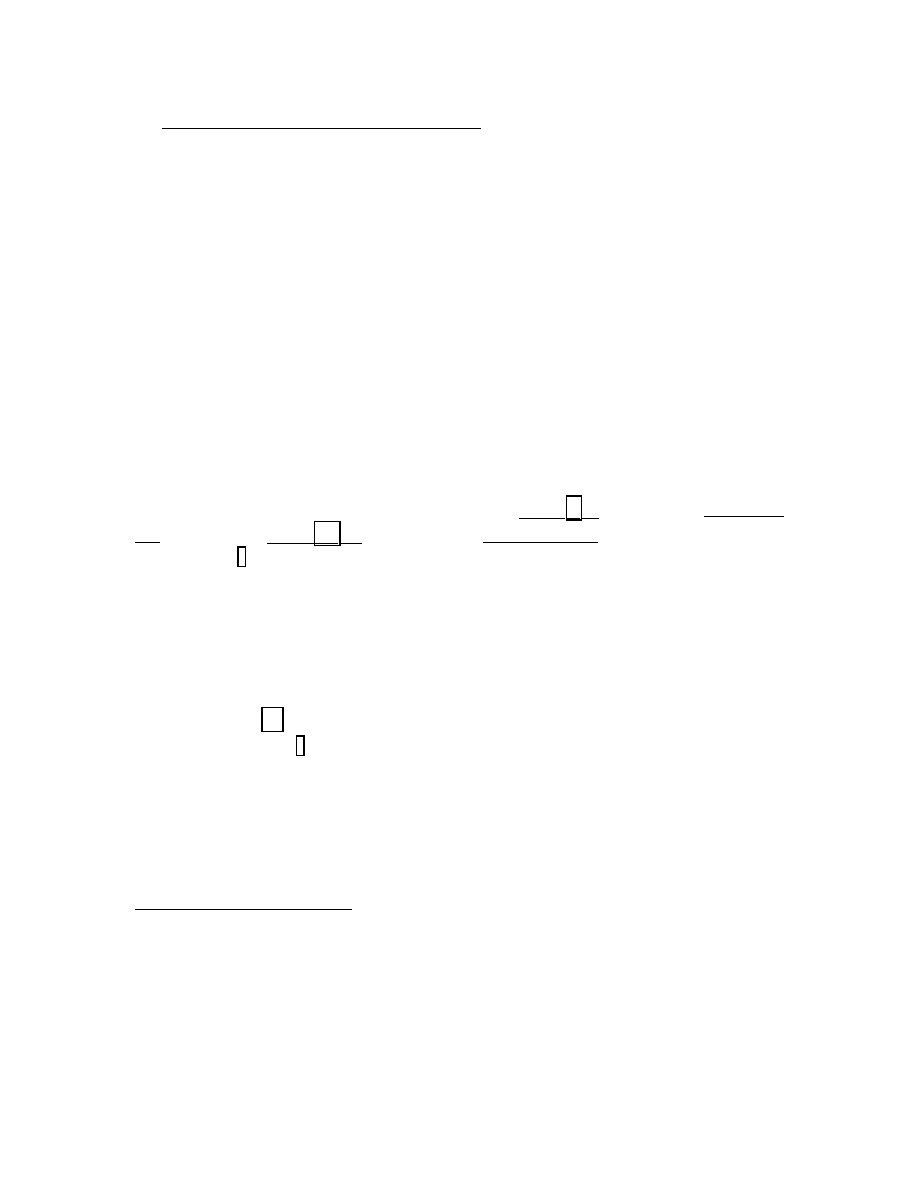
1
Chapter ##
PHONOLOGY: VOWELS
ole has a five vowel system and, like most Chadic languages, it has a contrast
between long and short vowels. Bole is unusual in having a length contrast for all
five vowels, both within a word and word final. Most Chadic languages, if they
have mid vowels at all, have only the phonologically long variants, and for high
vowels, a four-way contrast between long and short variants is often marginal and/or
environmentally restricted. Bole does share with most other Chadic languages a prohibition
against long vowels in closed syllables, and the length distinction in high vowels is
neutralized before homorganic glides.
1. Inventory of vocalic nuclei
The monophthongal vowel system of Bole is the following, where a macron represents a
long vowel:
i
ê
u
u\
e
e\
o
o\
a a\
Bole also has a full set of diphthongs rising to the high vowels, though all but ai and au
are restricted in occurrence (§3):
ui
iu
ei
ou
oi
eu
ai
au
2. Monophthongal Vowel Contrasts
Bole is unusual among Chadic languages in having a five vowel system with both length
and quality contrasts for all vowels in open syllables. In Hausa for example, short mid-
vowels contrast with their long counterparts only in word final position, and the contrast
between medial short i and u is marginal, if there is a contrast at all (Parsons 1970, Schuh
2002).
2.1. Word medial contrasts
Contrasts in length
i ~ ê
fiìlo
‘voice’
fiêlo
‘winding’
e ~ e\
lele
‘smearing’
le\le
‘rock outcropping’
u ~ u\
buyo
‘blowing’
bu¥yoæ
‘beard’
o ~ o\
soæni
‘year’
so\ni
‘honey’
a ~ a\
daæ∫aæ
Combretum spp.
da¥∫a
‘peanut sauce’
B

2
Contrasts in short vowels
i ~ e
kirkir
‘all’
kerker
(id.) ‘stubby’
i ~ a
dila
‘jackal’
taæla
‘failed attempt’
i ~ u
bidaæ
‘thatching needle’
buædaæ
‘male servant’
i ~ o
mìfii
‘python’
boæfiì
‘night’
u ~ o
&yule
‘saliva’
fioæle
‘small’
u ~ a
&yula
‘testicle’
&yaæla
‘guinea corn’
u ~ e
kurì
‘red earth’
kerì
‘a “tip”’
e ~ o
beæle
‘crying’
boæleæ
‘scar’
e ~ a
peæteæ
‘exiting’
paætaæ
‘tail’
o ~ a
boæfiì
‘night’
baæfiì
‘five’
Because contrastive medial short mid vowels are not common in languages related to
Bole, the question arises as to their source. A full answer to this question must await further
comparative linguistic work, but one source may be a reconfiguration of labialized and
palatalized consonants + a. Proto-West Chadic had at least labialized velars and possibly
palatalized velars, whereas Bole has no phonologically distinct labialized or palatalized
consonants. In borrowing from Hausa, Bole realizes Cwa as [Co] and Cya as [Ce].
gòdò
‘blanket’ < Hausa gwàdò
kobò
‘kobo coin’ < Hausa kwabo¥
kòndo
‘basket’ < Hausa kwaændo\
koæfioæyi
‘greed’ < Hausa kwaæfiaæyê
geængefii
‘nodding from drowsiness’ < Hausa gyaængyafiê
kellèbi
‘headscarf’ < Hausa kyallaæbê
kènkesò
‘cockroach’ < Hausa kyaænkyaso¥
2.2. Word final contrasts. As opposed to word medial position, where the length contrast
in vowels bears a high functional load, there are no lexical distinctions based on final vowel
length alone, and the small number of words that end in long vowels almost all fall into
restricted sets of semantic and syntactic categories. Below are lists of most words that can
occur before pause and end in long vowels. Ideophonic adjectives of the “ kololo” type
(##) and ideophones of the “ kolola” and Cv\ types (##) always have long final vowels, so
the lists include only one word exemplifying each vowel. This list excludes words and
clitics that appear only phrase medially. Such words and clitics are nearly all monosyllabic
conjunctions, prepositions, and pronominal clitics, e.g. ba¥ ‘if’, la¥ = ya¥ ‘which, that’ (relative
clause marker), ga¥ ‘in, interior of …’, ta\ ‘her, to her’ (non-final object clitic), jÏ
‘progressive marker’ (originally a bound form of jÏwo ‘body’), mu\ ‘us, to us’ (non-final
object clitic), le\ ‘even if, every-… (as in le\loæ ‘everyone’), kobo¥ ≠ kaba¥ ‘let not…’
(negative imperative marker). The lists are sorted by lexical category.
Words ending in long -ê
go\lêlê
ideophonic adj.
‘small and round’
mbÏrÏrÏ
n.
‘mud-dauber wasp’
shê
pronoun
‘you’ (f.s. indep. pronoun)

3
Words ending in long -u\
muærsu¥su¥
ideophonic adj.
‘big, strong’
mbu¥ru¥ru¥
n.
a type of colorful locust
guæu ≠ guæbuæ (Gadaka) n.
‘corpse’
Words ending in long -e\
me¥le¥le¥
ideophonic
adj.
‘lying long and stretched out’
pe¥
id.
‘exhaling’
ke ≠ ke\} ≠ ke\yì
part.
‘indeed, also’ (H. kuma, ma)
de\
part.
used for emphasis as in Hausa ba or ko
(yes/no question)
eme¥
det. m.
‘this; this one’ (masculine)
oshe¥
det. m.
‘this; this one’ (feminine)
maæine\}
det. pl.
‘these’
tene¥
adv. loc.
‘here’
eæsse\}
presentative
‘here’s …, here it is’
mamme¥
adv. man.
‘thus’
eænne\} (from &ya]n eme¥ ^this
thing&)
1
part.
‘so-and-so, whatever’—used as a hesitation
marker or filler (H. abin nan)
goæriye¥ < goæru ± ye]
adv. loc.
‘this town’
soæniye¥ < soæni ± ye]
adv. tem.
‘this year’
payye¥ < pai ^place&
adv. loc.
‘over there’
conco¥ne\} ≠ honco¥ne\}
adv. tem.
‘now’
she\
adv. man.
‘like this, thus’
be¥
n.
‘son’
fie¥ (VN of fia\- ^mount&)
n.
‘copulation by animals’
ke¥ (VN of ka\- ^transplant&) n.
‘seedling’
Words ending in long -o\
sho¥ro¥ro¥
ideophonic adj.
‘watery’
insho\ ≠ insho\yi
adv. tem.
‘today’
ìyo¥ ≠ yo¥
interjection
‘well, mhm’
nd-a¥ko\
ventive VN
‘coming, arrival’
bo¥
n.
‘mouth; language; sharpness (of blade)’
1
It seems clear that the item eænne\} is, historically at least, not a unitary word. The derivation from ‘this
thing’ is speculative, based partly on a reasonable phonological resemblance, partly on the functional
relationship to the morphologically transparent Hausa counterpart. An item with a somewhat different
function, but probably with the same historical source is eænne\, a particle introducing an surprising or
unexpected event, e.g.
eænne\ ka ndê boænoæ sa ^so you didn&t go home after all&. Functionally this item
cannot occur phrase final and hence is not listed here.

4
Words ending in long -a\
paærta¥ta¥
ideophonic
adj.
‘tall, strong’
dìkì∫a¥
id.
‘very dirty’
pa¥
id.
‘with a bang, modifying a fall’
aæyya\
interjection
(as question) ‘is that right?!’
gidiba¥
interjection
‘how amazing!’
haæba\}
interjection
‘come on, now!’
ama\ ªama\&º
det. m.
‘that; that one’ (masculine)
aæssa\ ªaæssa\&º
presentative
‘there’s …, there it is’
maæina\ ªmaæina\&º
det. pl.
‘those’
osha\ ªosha\&º
det. f.
‘that; that one’ (feminine)
tana\ ªtana\&º
adv. loc.
‘there’
paipayya\ (< payya)
adv. loc.
‘way over there’
payya\ ªpayya\&º < pai ^place& adv. loc.
‘over there’
kaa ≠ kala
conj.
‘as for, but, moreover’
ma\"
pro.
‘you (pl.)’ (indep. pronoun)
arkìla\}
n.
‘Abyssinian roller’
ba\}
n.
‘Dad; often combined with a man’s name to
make a proper name, e.g. Ba\ Idi,
Ba\ Muhammad, Alaji Ba\’
lìpìla\}
adj.
‘blue’
mba\"
n.
‘upper arm; wing; branch’
Ωga\}
adj.
‘strong, healthy’
raækka\}
n.
‘heavy silver bracelet worn on ankle or
wrist’
sa\}
n.
‘victory, luck’
sa\" ≠ saæra
n.
‘hand’
sha\}
n.
‘circumcision’
taæma\}
n.
‘thinking, believing’
za\}
n.
‘el (measurement from elbow to fingertip)’
zo¥la\}
n.
‘mudfish’
Words ending in long vowels fall into the following categories:
• Ideophonic adjectives: These are ideophone-like words that can directly modify nouns
(##). The “ kololo” type have three syllables, all H or all L and the last two syllables are
identical, with a long vowel, e.g. mbêrêrê ‘small and skinny’ (see ## for more examples).
There are a couple of insect names that seem to be ideophonic adjectives in origin, e.g.
mbÏrÏrÏ ‘mud-dauber wasp’.
• Ideophones: All CV ideophones end in a long vowel, e.g. pe¥ “ exhaling” , as do all
ideophones of the “kolola” type (##) e.g. dìkì∫a¥ ‘dirty’.
• Interjections: A significant number of interjections end in long vowels. Unlike the
ideophonic categories typified by long final vowels, there are no apparent formal
generalizations that link interjections ending in long vowels vs. those ending in short

5
vowels. For example, nothing about the form of aæyya\ ‘is that right?!’ending in a long
vowel seems to distinguish it from awwà ‘how terrible!’ ending in a short vowel.
• Modal particles: A few monosyllabic modal particles end in long vowels. Like
interjections, however, final long vowels are not a universal property of such particles, e.g.
mà emphasizer for imperative, pa “ indeed” (stressing the certainty of a statement) end in
short vowels.
• Demonstratives and related words: All demonstratives end in long vowels as do words
broadly related to the demonstrative system, including the words for ‘here’ and ‘there’, a
set of locatives derived from pai ‘place’, the near and far presentatives, and probably the
words mamme¥ ‘thus’ and the words for ‘now’ and ‘today’. The words goæriye¥ ‘this
town’ and soæniye¥ ‘this year’ derive from gòru ‘town’ and sòni ‘year’ respectively plus
the Previous Reference Marker yê (##), but the PRM in its productive function has a short
vowel, and in fact the expressions ‘this town’ and ‘this year’ contrast with the
corresponding analytic constructions meaning ‘the town/year in question’ (##).
• Ventive verbal noun suffix -a¥ko\: This suffix has a final long vowel, and hence every
verbal noun bearing this suffix ends in long -o\.
• Independent pronouns; The independent pronouns shê ‘you (f.s.) and ma\" ‘you (pl.) have
long vowels. Significantly, these are the only independent pronouns which would have
only one mora if they ended in short vowels (see ## for the full independent pronoun
paradigm).
• Monosyllabic nouns: All monosyllabic nouns except lo ‘meat’, jo ‘running’, and ’ya
‘thing’ have long final vowels. This is the instantiation of a widespread “ minimum
word” feature of Chadic languages requiring non-clitic words to have at least two moras.
The only other monosyllabic words in Bole that can occur independently and end in short
vowels are lò ‘who?’ and lè ‘what?’. All other short monosyllables are syntactic clitics,
e.g. sa negative, nà quotative, gà ‘with’, ko ‘from’, etc.
• Miscellaneous nouns and adjectives with final contour tones or derived from disyllables:
A fair number of nouns and adjectives, nearly all loanwords and all ending in long a\}, have
contour tones on the final syllable. The long vowel seems to be necessary to carry the two
parts of the contour tone. A few words have long vowels resulting from elision of a
consonant between two short vowels (see ‘corpse’ and ‘hand’). The resultant nouns are
monosyllables and hence conform to either the “ two mora” principle and/or the “ contour
tone” principle for requiring long vowels.
Aside from the rarity of words with long final vowels and the lexical restrictedness of
such words, it is not at all clear that there is a consistent phonetic contrast between long and
short vowels before pause. Some speakers usually add a glottal stop after prepausal short
vowels, at least for nouns. This is not a consistent diagnostic for final short vowels,
however, since pronunciation without glottal stop is also common. The one area where there
does seem to be consistency in the presence or absence of prepausal glottal stop is in
demonstratives and related words (##). In this group of words, there is a consistent
meaning/vowel quality correlation between final -e\ “ proximal” and final -a\ “ distal” .
Before pause, the proximal forms are never terminated with a glottal stop while the distal
forms consistently end in glottal stop. This glottal stop does not appear phrase medial, and
the vowels for both proximal and distal are always long. The following paradigm illustrates
this with the words meaning ‘here’ and ‘there’. See ## for discussion of tones.
Final
Medial
Proximal
tene¥, •tene¥&
‘here’
tene\ sa
‘not here’
Distal
tana\&, •tana¥
‘there’
tana\ sa
‘not there

6
3. Diphthongal Contrasts
The diphthongs ai and au are fairly common in both root medial and root final
positions:
au
ndàurò
‘gum Arabic’
kàshàu
‘sesame’
ai
àikì
‘squirrel’
dài
‘red’
The remaining phonetic diphthongs are not common, and, with a couple of apparent
exceptions, they occur only in morpheme final position, though they may be word medial as
part of reduplicant or a root with a suffix added.
Since there are so few tokens, we list all
those in currently available data:
ui:
dùnkui the tree Mitrascarpum scabrum, kuimi a type of tree, rui ideophone for
striking, rùi ideophone for swelling, sûi ‘that’s good!’, (w)ùi ‘pregnancy’, bùishè
‘blowing’ (< buyu- ‘blow’)
iu:
jingiu a type of fish trap, kìla¥liuliu ‘fulvous tree duck’, liuliu ‘flexible’, liuliu
‘purlin inside thatched roof’, lì’y’yìu ‘slimy’, miu ideophone for stinging pain, pîu
‘awl’, piu ideophone for sourness, ziriu ‘sacred ibis’
oi:
Bamoi nickname for Muhammad, boi ‘back’, gòigoi a type of spirit, koikodò
2
‘beads worn around waist’, mbòi ‘fleshy part of bird’s ribs’, moi ‘king, emir’,
poishi ‘drought’ (cf. pò’’u- ‘dry up’), zòi ‘pleasant, tasty’, mòishè ‘seeing’ (<
moyu- ‘see’)
ou:
bòlou ‘two’, monòu ‘how many?’, zôu ‘life; next year’, ∫oushe ‘scorning’ (<
∫owu- ‘scorn’), fioæutu- ≠ fio¥tu- ‘seat’ (< fiowu- ‘sit down’), gòushè ‘beating’
(< gowu- ‘beat’), lòushè ‘an answer’ (< lowu- ‘to answer’), sòushè ‘touching’ (<
sowu- ‘touch’), ’yòutu- ‘disturb’ (< ’yowu- ‘be upset’), zòushè ‘putting’ (<
zowu- ‘put’)
eu:
geæfieæu ‘strength’, leulewe ‘ringworm’ (the Gadaka dialect has a couple of
additional words with eu)
ei:
dei emphatic particle, njei ‘force, necessity’, dèitu- ‘guard’ (cf. dèyi ‘tending
animals’), be'i = bèyi ‘place’, de'i = dèyi ‘tending animals’, le'i = lèyi ‘child of...’
(< leyu- ‘give birth’) (the Gadaka dialect has a few additional words with ei where
Fika has ai, e.g. Gadaka dèi, Fika dài ‘red’)
Phonological structure in some Chadic languages provides evidence for whether
diphthongs are best viewed as VC, with a consonantal glide coda, or as a VV vocalic syllable
nucleus. Miya, for example, has the former structure while Hausa has the latter (Newman
and Salim 1981, Schuh 1989). In Bole there seems to be no evidence from phonological
alternations nor morphological behavior for one analysis over the other. Some phonetic
diphthongs in Bole derive from VC, e.g. the verb moyu- ‘look at’ belongs to a class of
verbs with CVC- root structure but has a verbal noun mòishè, in which the nucleus of the
first syllable is identical to the nucleus of the first syllable of boishì ‘your (f.) back’, from
boi ‘back’ + possessive pronoun. We use the Bole practical orthography, which writes
diphthongs as vowel sequences in conformity with the widely used standard orthography of
Hausa.
2
Along with kui mi (a type of tree), this is only one of two words with what looks like a word internal
diphthong other than ai or au. Koi - is reminiscent of ko¥yi ‘head’, but the combining form of ‘head’ is
k o, not k o i.

7
4. Vowel Alternations
4.1. Short non-high vowel assimilation and height matching. Bole has a rule that
applies in some morphological environments to assimilate short a to e when the nucleus of
next syllable is e:
a ‡ e / ___Ce
This assimilation takes place most productively in class B verbs. Verbs of this class all have
Cv¨C(C)- root structure. The Future form for this class is Cv¨ÆC(C)è, the Habitual form is
Cv¨C(C)e, and the verbal nouns for most class B verbs end in -e. Likewise, the Subjunctive
of class B verbs has stem final -e. If the root vowel is /a/, which is it for most class B verbs,
this vowel assimilates to the final -e of the verbal noun, Future, Habitual, and Subjunctive.
The table below illustrates the alternation between completive, with stem final -a and hence
no root vowel alternation, and verbal nouns with final -e. The same alternations take place
for the other forms, e.g. Completive baæsa\wo¥yi ‘he shot’, but Future aæ beæse¥-yi ‘he will
shoot’, Habitual aæ bese¥-yi ‘he shoots’, Subjunctive beæse\} < /beæse\-yì/ ‘that he shoot’.
Completive
Verbal Noun
paæta\woæ
pete
‘go out’
baæsa\wo¥yi
beæse
‘spin (thread)’
aæwa\wo¥yi
ewe
‘open’
kaæra\wo¥yi
keæreæ
‘cut, slaughter’
baætta\:wo¥yi
bette
‘trick, scare’
laæmfia\:wo¥yi
lemfie
‘lick’
kaærra\wo¥yi
(pluractional of kaæra\wo¥yi)
keærreæ
‘slaughter repeatedly’
cf. dìsa\wo¥yi
guæra\wo¥yi
which do not have ¶a¶ in the first
syllable and do not assimilate
dise
guæreæ
‘lean against’
‘dig away’
The conditioning for the a ‡ e alternation is both phonological and morphological. On
the one hand, it applies in class B verbs even when the environmental e is not in a
contiguous syllable. This arises in pluractional verbs with an infixed -gi- (##), which
interrupts the contiguity between the initial /Ca-/ syllable and the syllable with the
conditioning -e-. Compare the following forms with the same verbs in the table above.
aæ keære¥yi
‘he will cut’
aæ keægìre¥yi
‘he will cut repeatedly’
aæ ewe¥yi
‘he opens’
aæ egâwe¥yi
‘he opens repeatedly’
On the other hand, the a ‡ e rule is not phonologically automatic when the environment
is met. For example, it does not apply to noun plurals ending in -e nor to verbs of other
classes in forms that end in -e. Though in the words below, it happens that a consonant
sequence or geminate separates a from the environmental e, the verb table above shows that
even class B verbs with medial CC undergo the alternation (batt-, lamfi-, karr-).
manshe (sg. maænshi)
‘old people’
garreæ (sg. gaæraΩ)
‘tall, long (pl.)’

8
gajje (sg. ga\zaæ)
‘roosters’
ishi kaæcce\}
‘that he intercept’ (Subjunctive of kàccu- class A2)
ishi kaæmte\}
‘that he persevere’ (Subjunctive of kàmtu- class A2)
Though a ‡ e is the only assimilation process that has the nature of an alternation
affecting the quality of underlying vowels in Bole, there is a tendency for any short non-
high vowel to match a non-high vowel in a following syllable, i.e. e-e (rèwe ‘tree’, shèkè
‘foot’, etc.), o-o (bòzò ‘well’, gòdoΩ ‘much’, etc.), a-a (pàtà ‘tail’, àdà ‘dog’, etc.). This
tendency has affected many borrowings, where short a assimilates to a following mid vowel
in Bole,
3
and there are a few lexically related words where such assimilation has taken place.
This tendency applies only to
SHORT
vowels. There are many words with
LONG
non-high
vowels followed by non-matching non-high vowels, e.g. te¥roæ ‘anvil’, je¥sa ‘mane of a
horse’, ga\reæ ‘lizard’, ka¥fio ‘tick’, ko\reæ type of man’s gown, ∫o\ra ‘diarrhea’. For some
vowels, the tendency for vowel matching seems to be stronger if only a singleton consonant
separates the vowels than if a consonant sequence or geminate separates them.
The following lists give an idea of the strength of the matching tendency for each
pairing of vowels. The apparent avoidance of the sequence eC(C)[-high,!-front] is
particularly strong. Avoidance of aC(C)[-low] seems somewhat less strong, but the fact that
a number of loanwords have assimilated a ‡ e/o, suggests that this is a dispreferred
sequence. On the other hand, words with the sequence oC(C)[-high,!-round] are more
common than the other sequences, and loanwords do not show a tendency to assimilate o to
following non-high vowels.
e-o: Only one word has an eCo sequence, and only two words has an eCCo sequence:
keænkesoæ
‘cockroach’ < Hausa kyaænkyaso¥
dètto
‘bitterleaf (Vernonia amygdalina)’
kerwo
‘fish’
e-a: Only one word has an eCa sequence, and only four words have an eCCa sequence:
pe¥reyaæ
a type of calabash decoration
aælkebbaæ
‘burnous’ < Hausa aælkyabba¥ < Arabic
Kebbaæ
name applied to a hefty woman (cf. kaæwa\- ‘be well nourished’)
mbeæccìmbeærmaæ
‘rhinoceros’
temka
‘sheep’ (pl. of tèmshi; Gadaka has tamka)
a-e: The sequence aCe is disfavored lexically—the list below may be complete.
aladeæ
‘pig’ ? < Hausa aælade¥
àrè
‘type, kind’
Atè, Batè
men’s names
badeæ
‘greater bustard’
3
Most such borrowings are from Hausa, which has no short mid vowels medially and hence provides no
cases where assimilation of a mid vowel to another non-high vowel could take place. More investigation is
necessary to discover whether Bole has borrowed any words from languages that freely allow medial short
mid vowels.

9
karkare
‘Karekare’
màté
‘them’
There is a substantial number of words such as ∫aærkeæ ‘nanny goat’, bangè ‘baboon’,
assè ‘big (ones)’ (plural of sêrì) where two consonants separate the vowels. Note in the
verb table above, however, that this underlying sequence changes to [eCCe] in class B verbs.
Likewise, in many borrowings, Bole realizes the source sequence aC(C)e as [eC(C)e], as in
the representative list below.
rèke
< Hausa raæke\
‘sugar cane’
dembe
< Hausa dambe
‘boxing’
beære\wa
< Hausa baære\wa\
‘gazelle’
gède
< Kanuri gàde ‘other’
‘different’
a-o: Unlike the a ‡ e rule affecting class B verbs, there is no comparable active process of
a assimilating to following o. Verbs with underlying short a in the first syllable retain a in a
productive class of verbal nouns ending in o (##), e.g. baro ‘withdrawing’ < baru-, kacco
‘intercepting’ < kàccu-. Nonetheless, there are more words with an o-o sequence than a-o,
and there is a tendency for source a to assimilate to o in borrowings. Below is an (nearly?)
exhaustive list of roots with an aCo sequence. There are also fewer than 20 words with the
sequence aCCo, such as yàuno ‘elephant’, ka'ngoæ gum Arabic’.
aægoggo
‘clock’ < Hausa aægo\go
karoæ
‘collision’ ? < Hausa karo¥
aælayyaæpo
‘spinach’ ? < Hausa aælayyaæho\ ngaæmoæ
‘Ngamo’
aæwo
‘stomach’
raæwoæ
‘bowstring’
Bamoi
a man’s name
shato
‘drops of rain’
Ba¥bayoæ
a man’s name
&yaæn&yaælo
a game
gaæro
‘Euphorbia unispina’
&yaæwo
‘granary’
kaæmo
‘wrestling’
Following is a list of representative loanwords where original a
HAS
assimilated to o.
bongo
< Hausa bango\
‘wall’
∫orgo
< Hausa ∫argo\
‘marrow’
mongòrò
< Hausa mangwaæroæ
‘mango’
zongò
< Hausa zango¥
‘area of town where travelers stay’
o-e: The following is a (nearly?) exhaustive list of non-derived words with this sequence.
This list is large enough that there is some question as to whether there is a true avoidance
of this sequence. Moreover, nouns with o in the first syllable and plurals ending in -e resist
assimilation of o to e, e.g. boæbbeæ ‘fathers’ < bo¥wu, tosse ‘gourd cups’ < toæsum. Finally,
we have not identified any cases of o ‡ e assimilation in loanwords, though medial short o
would not exist in languages that would be the main sources of Bole loanwords.
4
boæleæ
‘scar’
&yoænge
strip of palm frond for weaving
boneæ
‘difficulty’ < Kanuri
zoængeæ
Balanites aegyptiaca
4
Kanuri, a primary source of loanwords in all Yobe State Chadic languages, does not have a vowel length
distinction. Kanuri o is normally borrowed as long o\ in Chadic languages.

10
fioæle
‘small’
zoænge
‘hyena’
mbole
‘dove’
konte
a type of trap
mbòlè
‘sexual intercourse’
bongeæl
‘man’s sleeveless shirt’
moæle
‘younger sister’
gotigoæjje
Tribulus terrestris
tombole
‘snail shell’
oshe¥
‘this (f.s.)’
ngoælngole
‘dum palm’
shoæshonge a type of plant
o-a: The list below is (nearly?) exhaustive for words with an o-a sequence. As in the case
of o-e, the list is large enough that it provides only weak evidence for avoidance of the vowel
sequence. Moreover, class A1 verbs, which end in -a in the Future and many of which have
verbal nouns ending in -a, do not assimilate a root o to final -a, e.g. lotu-, VN lotà ‘chip a
piece off’. As in the case of the o-e sequence, borrowed words that might illustrate o ‡ a
assimilation would be rare to non-existent because likely source languages would not have
medial short o.
goæma
‘market’
woænaæ
‘dancing’
5
kora\koæraæ
‘mat used for a door covering’
losha\fioæ
‘flower balls of locust bean tree which are putting out beans’
dìkolba
‘a dance in which the feet are shuffled forward’
gomnatì
‘government’ < Hausa gwamnatì < English
goændaæ
a type of women’s wrapper
koæryaæ
‘storm’
loængafieæ
‘a decorative band tied around the hair on the top of the head’
nzonna
‘twins’
(cf. singular nzònni and general resistance of vowel alternation in plurals)
osha\
‘this (feminine)’
woækkaæ ≠ waækkaæ
‘large calabash’
Ωgorwa
‘guests’
(cf. singular ngòropi and general resistance to vowel alternation in plurals)
In addition to the lexical skewing favoring matching of sequential non-high vowels and
the adaptation of borrowed words to this favored pattern, there are a few lexical pairings in
Bole that show vowel differences resulting from assimilation. Closer examination of the
Bole lexicon will probably unearth further examples.
gompor
‘bamboo door closure’
geæmpìreæm
‘metal awning’
woærfio
‘fart’
yeæreæfiì
‘biliousness’
wottoæ
‘staple food’
weætekulleæ
‘remnants of food in bowl’
roækku-
‘chase away’
rekke
‘chasing birds from farm’
5
Formally and semantically wònà ‘dancing’ looks like a class A1 verbal noun. There is a related verb, but
it is derived from the noun, viz. wòntu- ‘make dance, make dance movements’.

11
mbaættaæm
6
‘heavy and fat’
≠ mbeæcceæm
koækkìfioæk
‘hard’
≠ kaækkìfiaæk ≠ kekkifiek
baæni
‘house’ (bound form, as in
bàni uwwà ‘pen for goats’
boænoæ
‘house’
Finally, borrowed words show an additional situation favoring matching of non-high
vowels. Throughout the discussion above, any assimilatory processes have been
anticipatory, i.e. if a change takes place, it is the vowel earlier in the word which assimilates
to the later vowel. Borrowed words provide examples of perserverative assimilation. If the
borrowed word has a long mid vowel or a mid vowel arising from source Cwa > Co or Cya
> Ce (§2.1), a short a in the next syllable usually (always?) assimilates to the preceding mid
vowel.
kellèbi
‘headscarf’ < Hausa kyallaæbê
lokòshi
‘time’ < Hausa lo\kaæcê
ò’’ioi
‘effort’ < Hausa ˚o¥˚arê
koæfioyi
‘greed’ < Hausa kwaæfiayê
4.2. Long vowel shortening in closed syllables. The maximal syllable in Bole has two
moras (##). A two-mora syllable may have rimes of one of three types:
Long vowel:
za¥
‘before’
Diphthong:
jâu
‘difficult’
Consonant coda: zan
‘Kanuri’
In order to maintain the two-mora limit, Bole shortens underlying long vowels that
surface in syllables closed by a consonant. A number of morphological situations create the
condition for shortening.
Noun plurals: Some nouns with a long root vowel in the singular have a plural with a
geminate, creating a closed first syllable and concomitant shortening of the root vowel.
ba\ti, (pl.) baæ&y&ye¥ti
‘elder brother’
bo¥wu, (pl.) boæbbeæ
‘father’
da¥dati, (pl.) daædde¥ti
‘elder sister’
ga\zaæ, (pl.) gajje
‘rooster’
gu¥sho, (pl.) gucce
‘stone’
no¥nu, (pl.) noænne¥ti
‘mother’
ya¥wi, (pl.) yaæbbi
‘chicken’
za\ti, (pl.) zaæppe¥ti
‘compatriot’
Note that the vowel in the singular shows whether the root vowel is underlyingly long or
short. Many nouns with plurals of this type have short vowels in the singular, e.g.
6
The words mbàttàm = mbèccèm and koækkìfioæk ≠ kaækkìfiaæk ≠ kekkifiek are ideophonic adjectives
(##). One property of this class of words is matching vowels, and there are others with variants like those
here, all involving non-high vowels. Note that the matched vowels skip the medial syllable, where the -i -
can be considered epenthetic, to avoid a CCC cluster.

12
buædaæ, (pl.) budde
‘servant’
dìshêti, (pl.) dìkke¥ti
‘grandfather; grandson’
gaæraΩ, (pl.) garreæ
‘tall’
moæjì, (pl.) mojje
‘husband’
Completive verbs with feminine and plural subjects or the ventive extension: Verbs in
the completive show feminine singular subject agreement by adding -aG-…-G- (G =
geminate copy of the next consonant) and plural subject agreement by adding -an-…-n-.
Completive verbs with the ventive extension add -n-…-n- (plus a verb stem vowel change in
some verb classes). Pronoun clitics that fall in the slot indicated by dots have underlying
long vowels, which surface as short in the three environments here because the second
element closes the syllable including the pronoun.
baæs-at-ta-k-koæ
‘she shot her’
cf. baæsa\-ta\-woæ
‘he shot her’
ngoær-an-ta-n-tì ‘they tied for her’
cf. ngor-ta\-tì
‘he tied for her’
flfioæppi-n-ta-n-go ‘he followed her (here)’ cf. fioæppi-ta\-wo ‘he followed her’
Subjunctive ventive; The subjunctive with the ventive extension geminates the consonant
of a pronoun clitic. If the final vowel of the verb is underlyingly long, it becomes short.
beæse-t-ta¥-yi ‘that he shoot (and bring) her’
cf. beæse\-toæ
‘that he shoot her’
i-t-to
‘that he do for her (and bring)’
cf. Ï-to
‘that he do for her’
Class C and D imperatives with agreement clitics: Imperatives of Class C and D verbs
(verbs with only one root consonant) have alternative forms: C-
V
| and C-
V
¨-G-Pro. In the
latter, the vowel of the imperative stem is short because of the syllable being closed by G
(gemination of the next consonant).
ri-k-ko
‘enter!’ (m.s.) = r-ê
ri-sh-shi
‘enter!’ (f.s.)
= r-ê
ra-k-ku
‘enter!’ (pl.)
= r-a\
Verb roots + -t- suffix (Gadaka dialect): Some intransitive verbs add a suffix -t- to the
root to become transitive. If the root has the form C
V
|C, addition of the -t- suffix causes
shortening of the root vowel in the Gadaka dialect. In this environment, the Fika dialect
inserts an epenthetic vowel between the root final C and the -t- suffix in order to avoid
closing the root syllable and shortening the vowel.
daær-t-u- ‘heal’
< da¥r-u-
‘get well, recover’
(cf. Fika da¥rìtu-)
daæm-t-u- ‘bother’ < Hausa da¥mu ‘be bothered’
(cf. Fika da¥mìtu-)
It may be the case that the Fika forms are original and that Gadaka has dropped the
epenthetic vowel. There are a couple of other verbs with similar phonological relationships
between the dialects, but where the third consonant is not a suffix (at least a productive one):
Fika ba¥wuæsu- vs. Gadaka baæusu- ‘singe’, Fika ra¥shìfiu- vs. Gadaka raæsfiu- ‘press
together’. Whatever the historical scenario, the Gadaka forms show vowel shortening in
closed syllables.

13
Miscellaneous cases of C
V
|C + C ‡ C
V
¨CC: There are a few forms that are lexically
related through non-productive processes showing an originally long vowel appearing as
short in a closed syllable:
sai-nì ‘wet’, stative related to sa¥yu- ‘be cold’
4.3. Neutralization of high vowel length before homorganic glides. Conforming to
what may be a universal feature of Chadic languages, the distinction between long and short
u is neutralized to short u before w and the distinction between long and short i is
neutralized to short i before y.
7
Thus, there are words such as those in the left hand column,
but none such as those in the right.
gùwa
‘forging’
but no *gu¥wa
rùwè
‘strolling’
*ru¥weæ
bíyè
‘sauce’
*bêyeæ
fiìya
‘honey comb’
*fiÏya
Evidence that the neutralization is specfically to the
SHORT
variants, not just to a vowel
of indeterminant length comes from metrics. Native Bole poetry/song metrics use syllable
weight as the organizing principle. The syllables Ci!/__y and Cu!/__w scan as light. For
example, in the song kona, in the lines Ba¥ba Da¥le\lì an du\niyaæ ‘Baba Daleli the worldly
one’, Ka\naæ Dêsaæ be¥ Ka¥ wu waæ ‘But it’s Disa, son of Kawuwa’, the underlined portions
must scan –!–!v!–, i.e. the boxed syllables must be short
8
(Schuh 2001).
There are words containing the sequence -uwwV-, e.g. tuwwà ‘day after tomorrow’.
(Inexplicably, there are no words containing the sequence -iyyV-, though -VyyV- is
permissible, e.g. wàyyà ‘fly whisk’). One might thus hypothesize a rule /u\wV/ ‡
[uwwV], e.g. /tu\waæ/ ‡ [tuwwà] ‘day after tomorrow’. This analysis fails, however,
because in cases where an underlying long high vowel combines with a homorganic glide,
the result is not V + geminate glide but rather a short vowel followed by the glide, e.g.
/la¥du\-woæ/ ‡ [la¥du-woæ] ‘it has been cancelled’. This verb appears in the kona line Ya¥ya
Gimbaæ woænaæ la¥duwoæ ‘Big brother Gimba the dance has been cancelled, where the
scansion requires vv!–!v!– . See §4.4.2 for evidence that the vowel u\ is underlyingly long.
A second argument against the sequence -uwwV being underlying /u\wV/ is the fact
that the sequences u\wV and êyV exist in Bole. There are no roots containing such
sequences and shortening demonstrably takes place in some cases (see preceding
paragraph), but under certain morphological conditions, speakers may retain a long high
vowel before a homorganic glide (##). Object pronouns before the completive suffix -wo
have a lengthened final vowel (§4.4.2) as do object pronouns in the imperative before the
suffix -yi (§4.4.1):
9
7
Bole does have a length contrast in high vowels before
NON
-homorganic glides: bu¥yoæ ‘beard’ vs. buyo
‘winnowing’, fiÏwa ‘looking at’ vs. baæfiìwaær ‘naked’. Note also, that unlike Hausa, Bole has a phonetic
contrast between short /i/ and /u/ before glides, e.g. buyo ‘winnowing’ vs. bi yè ‘sauce’, baæfiìwaær ‘naked’
vs. koæfiuæwi ‘handle of an axe or hoe’. Finally, there is a length contrast of long and short
MID
vowels
before homorganic glides, e.g. fioæwê$$$$} ‘sit down!’ vs. do¥wì ‘horses’, b è y i ‘place’ vs. pe¥yê$$$} ‘roast!’.
8
Line final syllables are weight-neutral, so the final syllables are arbitrarily scanned as heavy though they
are phonologically light in these examples.
9
As pointed out in ##, the -yi suffix on imperatives with object pronouns is anomalous inasmuch as this
suffix is normally present only on transitive verbs where there is no expressed object. It is thus an

14
ngor-na\-wo
‘he tied me’
ngor-shê-wo
‘he tied you (fs)’
ngor-mu\-wo
‘he tied us’
ngor-ta\-yi!
‘tie her!’
ngor-su\-yi!
‘tie them!’
ngori-nÏ-yi!
‘tie him!’
Speakers feel that the vowels on the pronouns are long in all these cases, including
-mu\- before the -w of the completive suffix and -nÏ- before the -y of the imperative suffix.
Inspection of vowel duration in sound spectrograms of a small set of examples confirms
this intuition of speakers.
10
It may be the case that speakers have a sense of paradigm
uniformity. Pronouns with vowels that do not match the glides clearly have long vowels.
To fit the overall paradigm, pronouns of the form Cu\ before w (ngor-mu\-wo) and
pronouns of the form Cê before y (ngor-nÏ-yi) also must have long vowels.
4.4. Morphologically conditioned vowel lengthening. Bole has no phonologically
conditioned processes of vowel lengthening that are parallel to processes of vowel
shortening described in §4.2. There are, however, several morphological environments that
condition lengthening of underlyingly short vowels. These all involve stem final vowels
when certain clitics are added, but unlike the tone rule of
PRE
-
CLITIC LOWERING
(##), which
is an essentially exceptionless rule H ‡ L!/H__+ clitic, pre-clitic lengthening is restricted to
specific clitics and/or to specific lexical items with clitics.
4.4.1. -yí Ø object clitic. Transitive verbs without an overtly expressed object require the
Ø object marker, -yi. This clitic conditions lengthening of the preceding vowel. The
clearest examples are future and habitual verbs. In these TAM’s, the final vowel of the verb
stem is long before -yi, but with transitive verbs, the final vowel is short before both
pronominal and nominal objects, and intransitive verbs always have a final short vowel.
aæ ngoæra\-yi
‘he will tie (it)’
aæ ngoæra-nì
‘he will tie him’ aæ ngoæra temshi
‘he will tie a sheep’
aæ &yoæra
‘he will stop’
aæ fioppo¥-yi ‘he follows (it)’
aæ fioppoæ-nì
‘he follows him’ aæ fioppo temshi ‘he follows a sheep’
aæ so\ro
‘he falls’
4.4.2. -wó completive clitic. Evidence that the completive clitic -wo conditions
lengthening of a preceding vowel is circumstantial, but it explains certain facts. Consider
the following verb forms:
unexplained feature particular to imperatives, but presumably it is the same suffix as the Ø object marker
for transitive verbs elsewhere.
10
It is difficult, if not impossible, to ascertain the phonetic facts about duration of the high vowels from
impressionistic listening because there is no clear demarcation point between the end of the high vowel and
the beginning of the homorganic glide. Measurement of the vowels in spectrograms revea,ls no significant
differences in duration between the different vowels before the glide—indeed, in the case of uw, the u
actually appears to be a bit longer than a or i . What we are really talking about, however, is phonological.
length, rather than phonetic duration. Evidence from metrics above shows that in roots and in at least some
morphologically complex environments, such as la¥du-woæ ‘it has been cancelled’, speakers treat Cu before
w and Ci before y as having phonologically short vowels. As an independent test that the vowel in ngor-
mu\-wo is phonologically long, we would like similar metrical evidence, but currently available data does
not include examples of the crucial type.

15
- u before - w o
Long -u\
No extensions
fioæppu-wo¥-yi
‘he followed (it)’
fioæppu\: teæmshi
‘he followed a sheep’
Totality
extension
fioæppu-tuæ-wo
‘he followed (it)’
fioæppu-tu¥ teæmshâ ‘he followed a sheep’
Without and with
ICP
so¥ru-woæ
‘he fell’
so¥ru\: jÏnì
‘he fell down’
Verbs of class A2 have final stem vowel -u in the completive, as does the totality
extension -tu. Vowel length of u is neutralized before the homorganic glide w of the
completive clitic (§4.3), but we assume that the completive -u stem vowel is underlyingly
short since it is short preceding the Totality Extension -tu, and -tu has no effect on the
length of the preceding vowel (cf. Class B verb baæsa\-tuæ-wo ‘he shot (it)’ which has a long
stem vowel -a\). In the column labeled “ Long -u\” in the paradigm above, the final vowel of
the verb and the vowel of the totality extension are long when followed by an object or the
Intransitive Copy Pronoun (ICP—##). The completive clitic is “ suppressed” in phrase
medial position (##), but the explanation for the long vowels in the “ Long -u\” column
must be that the underlying presence of -wo conditions lengthening. We propose the
following derivations for the forms in the “No extensions” row above:
Underlying
11
PRE
-
CLITIC LOWERING
Lengthening before - w o
Suppression of - w o
u\ ‡ u /__w
fioæppu-wo-yi
fioæppu-woæ-yi
fioæppu\-wo¥-yi
---
fioæppu-wo¥-yi
fioæppu-wo teæmshi
---
fioæppu\:-wo teæmshi
fioæppu\: teæmshi
---
It is this the last two steps in the derivation, working together, that obscure the
lengthening effect of -wo: if -wo is overt, its initial glide, w, undoes the lengthening of u
that the clitic conditioned (§4.3), but if the clitic is absent, the vowel is free to retain the
length that the underlying clitic conditioned.
4.4.3. Genitive pronouns with certain nouns. A small set of nouns, mainly body part
terms, kin terms, and common household items, lengthen their final vowels before genitive
pronoun clitics. Though it is the nouns that undergo lengthening that must be lexically
marked, it is the pronoun clitics that trigger the lengthening. These nouns all end in either
-a or -e, and in the Fika dialect, all have two syllables, but there are no skewings with respect
to root syllable weight or tone pattern. See ## for a complete list of nouns that undergo pre-
genitive clitic lengthening and more discussion.
&yula¥-nì
‘his testicle(s)’ (< &yula with
PRE
-
CLITIC LOWERING
—##)
tuæmba\-noæ
‘my navel’ (tùmba)
kula¥-to
‘her calabash’ (kulà)
jaæfia¥-no
‘my hoe’ (jaæfiaæ)
da\nde¥-su
‘their children’ (da\ndeæ)
sheæke¥-no
‘my foot’ (shèkè)
4.4.4. Class B verbs in the future and habitual with object clitics. Intransitive class
B verbs and transitive class B verbs with a nominal direct object have short final vowels in
the future and habitual, but with pronominal clitics (direct or indirect objects) the final vowel
11
The Ø object marker -yi in the left-hand column is present only with transitive verbs when no overt
object is present.

16
is lengthened. Thus, verbs of this class in these TAMs must be marked to undergo
lengthening, but the trigger for lengthening is presence of the clitic.
Fut.
aæ beæse¥-to
‘he will shoot her/for her’ cf. aæ besæe teæmshi
aæ peæteæ
‘he will shoot a
sheep’
‘he will go out’
Hab.
aæ bese¥-to
‘he shoots her/for her’
cf. aæ bese temshi
aæ pete
‘he shoots a sheep’
‘he goes out’
4.4.5. -wa plural suffix. A number of nouns, particularly those referring to ethnic and
occupational groups, add a suffix -wa to the singular stem, which takes all low tones and a
lengthened final vowel.
Singular
Plural
bulamaæ
‘ward head’
buælaæma¥wa
Karekare
‘Karekare person
Kaæreækaære¥wa
aælka\li
‘judge’
aælka¥lÏwa
ko\ro
‘donkey’
ko¥ro¥wa
Wyszukiwarka
Podobne podstrony:
Bakterie Gram
Gram plus, Ratownicto Medyczne, MIKROBIOLOGIA
Proteomics in gram negative bacterial outer membrane vesicles
Gram hebrajskiej gramatyki
Front vowels handout
gram nom comps
gram comparison
1 ROZPOZNAWANIE I STOSOWANIE STRUKTUR GRAM LEKS
Spr.gram.-ort., Inne sprawdziany
3xP Gram
Mikrobiologia opracowanie na podstawie części II Skryptu WAM wersja ostateczna wreszcie kurna!!! , Z
w4 gram i gram
gram placV 2
spr gram III, czytam i piszę, Ortografia(4)
ściągi gram
all vowels
gram stopniowanie
I GRAM ( )
Biobójcza działalność preparatów względem bakterii Gram(-), porównanie
więcej podobnych podstron